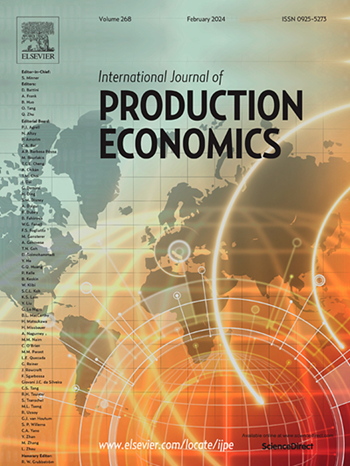Incentives or time-of-use pricing: Strategic responses to electricity demand response programs for energy-intensive manufacturers
IF 9.8
1区 工程技术
Q1 ENGINEERING, INDUSTRIAL
引用次数: 0
Abstract
The integration of renewable energy into the electricity grid introduces significant challenges due to its intermittent nature, necessitating effective electricity demand response programs (EDRPs) to manage industrial consumption patterns. Energy-intensive manufacturers, while well-positioned to benefit from programs such as Time-of-Use (TOU) pricing and Incentive-Based Programs (IBPs), encounter operational complexities associated with production adjustments and potential reductions, complicating their participation. This study develops an analytical model to explore optimal responsive strategies for manufacturers under TOU pricing and IBPs, with the goal of minimizing total operational costs. The results indicate that TOU pricing enables manufacturers to adopt either load shifting (LS) or load reduction (LR) strategies depending on penalty costs. However, under IBPs, insufficient incentives often result in non-responsiveness (NP). While higher off-peak responsive costs typically make LR strategies more appealing, manufacturers under TOU pricing are more likely to adopt LS strategy as responsive costs increase, when faced with shorter expected peak periods. In contrast, the choice between LS and NP strategies under IBPs is unaffected by peak period uncertainty. A comparative analysis reveals that IBPs offer superior responsive performance when penalty costs are sufficiently high, but TOU pricing generally outperforms IBPs in productive performance across most scenarios. These findings, illustrated through a case study, provide valuable insights for manufacturers in selecting the most appropriate responsive strategies, helping them navigate the trade-offs between electricity cost savings and operational burdens under different EDRPs.
激励或分时电价:能源密集型制造商对电力需求响应计划的战略响应
由于可再生能源的间歇性,将其整合到电网中带来了重大挑战,需要有效的电力需求响应计划(EDRPs)来管理工业消费模式。能源密集型制造商虽然能够从分时电价(TOU)和激励计划(IBPs)等项目中受益,但也会遇到与生产调整和潜在减排相关的运营复杂性,这使他们的参与变得更加复杂。本研究建立了一个分析模型,探讨在TOU定价和ibp下制造商的最佳响应策略,以最小化总运营成本为目标。结果表明,分时电价使制造商能够根据惩罚成本采取负荷转移(LS)或负荷减少(LR)策略。然而,在IBPs下,激励不足往往导致非响应性(NP)。虽然较高的非高峰响应成本通常使LR策略更具吸引力,但当面临较短的预期高峰时段时,采用分时电价的制造商更有可能采用LS策略,因为响应成本增加。相比之下,在IBPs下,LS和NP策略之间的选择不受峰值不确定性的影响。一项比较分析显示,当惩罚成本足够高时,ibp提供了更好的响应性能,但在大多数情况下,TOU定价在生产性能方面通常优于ibp。通过案例研究,这些发现为制造商选择最合适的响应策略提供了有价值的见解,帮助他们在不同edrp下的电力成本节约和运营负担之间进行权衡。
本文章由计算机程序翻译,如有差异,请以英文原文为准。
求助全文
约1分钟内获得全文
求助全文
来源期刊
CiteScore
21.40
自引率
7.50%
发文量
266
审稿时长
52 days
期刊介绍:
The International Journal of Production Economics focuses on the interface between engineering and management. It covers all aspects of manufacturing and process industries, as well as production in general. The journal is interdisciplinary, considering activities throughout the product life cycle and material flow cycle. It aims to disseminate knowledge for improving industrial practice and strengthening the theoretical base for decision making. The journal serves as a forum for exchanging ideas and presenting new developments in theory and application, combining academic standards with practical value for industrial applications.

 求助内容:
求助内容: 应助结果提醒方式:
应助结果提醒方式:


